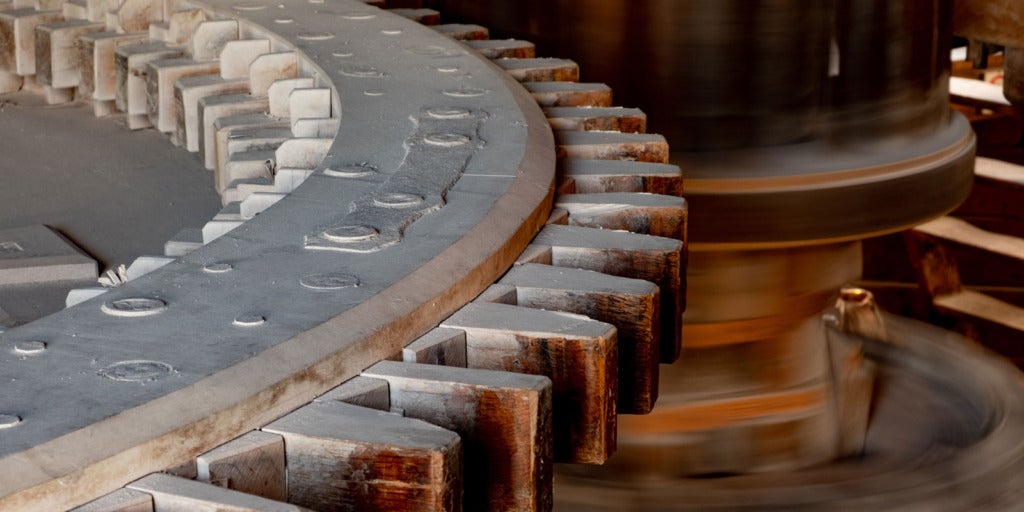In the energy industry, nothing is more important than the efficiency, maintenance, and safety of the equipment used to generate power for your customers. From oil refineries to wind turbines, there are huge advantages to be gained from keeping equipment running at peak performance. Advanced equipment services (AES) are key to making sure your equipment, processes, and operations run smoothly.
Digital technology has a large role to play – from setting up intelligent sensors that monitor the condition of equipment to automating the workflows that ensure broken equipment is fixed quickly. In this blog, we look at how to use the Nintex Platform to map, automate, and optimize the core processes that keep your advanced equipment functioning.
Advanced equipment services in action
All energy organizations rely on the equipment that powers their business. Advanced equipment services ensure the upkeep of this equipment. This includes monitoring their condition, reporting any issues, diagnosing the cause of the problem, ordering parts, sending technicians to fix issues, and much more.
Not only are these pieces of machinery incredibly complex – think of all the parts that work together to a wind turbine’s smooth running: the blades, generator, gearbox, rotor, etc. – but there are also the processes that underpin them.
The Internet of Things (IoT) is becoming more useful, cheaper, and effective, and is becoming a crucial part in the upkeep of energy equipment. But IoT is only valuable if the data being collected is put to good use.
[nintex_blockquote]If a problem is detected with your equipment, there must be efficient processes in place to ensure that the data is captured accurately, stored in the right place, and sent to the right people so that action can be taken swiftly.
It’s crucial that several AES processes run smoothly, like those that connect generated data with employees at the head office and technicians out on the road, and those that send the data to the ERP, CRM, advanced analytics, and other data management systems that the organization uses to store, manage, and analyze this information.
From requests to repairs to invoicing, there are many processes that can be optimized and streamlined to increase efficiency, reduce the likelihood of human error, and prevent downtime at energy organizations. These processes are an ideal target for automation. When they remain slow and manual, they limit how effective core business functions can be.
Why automate advanced equipment services?
With the energy sector under pressure to meet worldwide targets to lower emissions and drive efficiencies, energy organizations need to revolutionize how they operate to get more from less. Here are some benefits that make process automation an easy win.
Avoid downtime
Organizations can evolve beyond the break/fix process, where equipment would have to break down before anyone noticed there was a problem. This approach leads to downtime as the equipment is repaired.
But this no longer needs to be the case. IoT sensors can monitor to detect slight defects or inefficiencies that can be diagnosed before equipment breaks down. These IoT sensors can trigger an automated workflow to send a notification to a field technician’s mobile device, allowing the technician to arrive quickly and repair equipment with the data, tools, parts, and knowledge required to get the job done as soon as possible.
Efficient data management
Responsive forms make sure that information is always stored in the right place at the right time when performing data entry. Mobile devices with electronic forms can help technicians record information about equipment while out on a site visit. With Advanced Workflows and Nintex DocGen®, this data can be used to create a wide range of business-critical documents and processes, such as work orders, equipment service reports, and authorizations. This makes service calls more efficient and reduces the risk of human error.
Remove repetitive processes
You can streamline, and in some places completely automate, repetitive and tedious tasks such as dispatch, parts lookups, equipment and/or site inspection checklists, and invoice approval. This frees up more time for workers to focus on high-value tasks.
Save time
You can reduce the time it takes to get tasks done within crucial workflows. Automation pushes workflows forward step-by-step by setting reminders, alerts, and requests to automatically inform colleagues if action is required.
Manage, automate, and optimize your processes
At Nintex, we believe in a three-step approach to successfully deploying process automation solutions across your organization.
Step one: Manage
Before automating your processes, you need to understand how they work. Nintex Promapp® allows organizations and individuals to understand and map their processes by increasing visibility, accountability, and control over the process.
Step two: Automate
Nintex Workflow, Forms, DocGen®, Nintex Sign®, Process Intelligence and more (you can see a full list of features here) are used to streamline the tasks that lend themselves to automation.
Step three: Optimize
The work doesn’t stop there. Once automated, you need to monitor success and analyze the processes’ performance. This way, you can continue to improve your core processes and drive your business forward.
The Nintex platform can help you manage, automate, and optimize the core processes that keep your advanced equipment functioning.
To find out more about process automation in advanced equipment services and how Nintex can help take your organization to the next level, get in touch with the Nintex team today.
